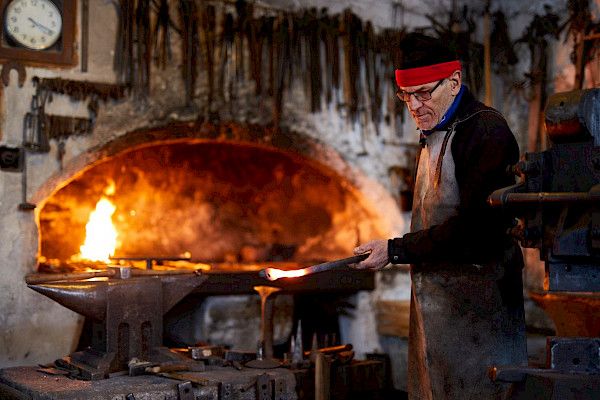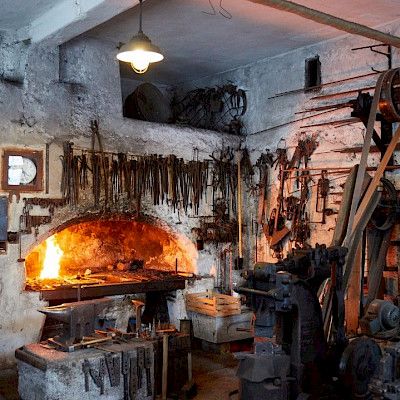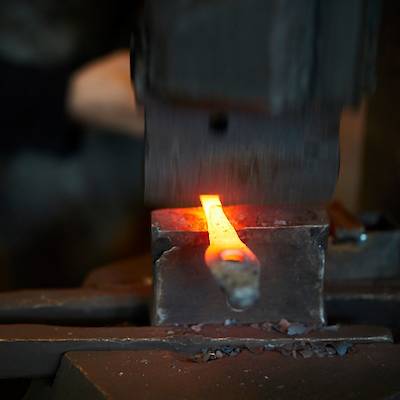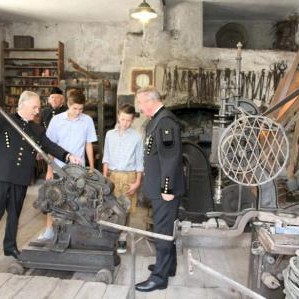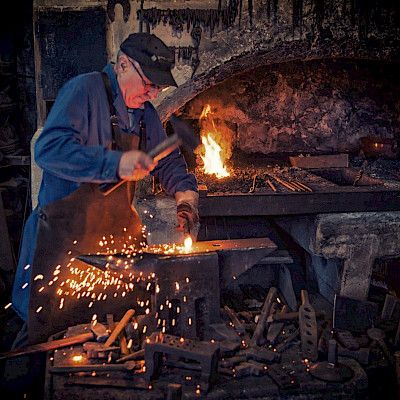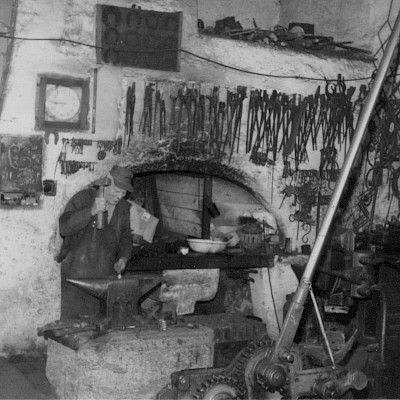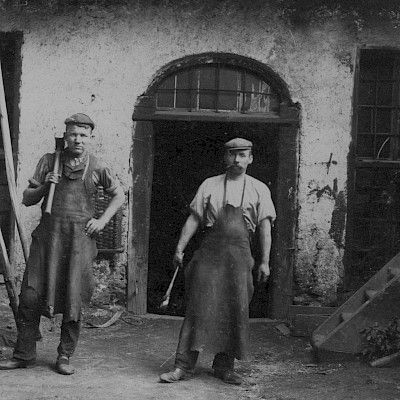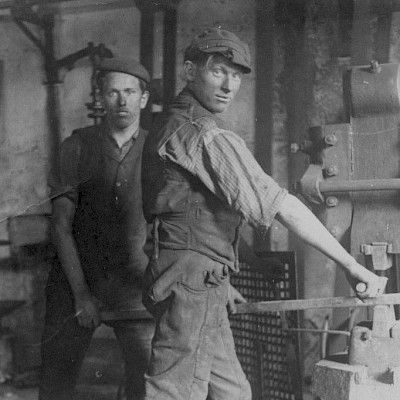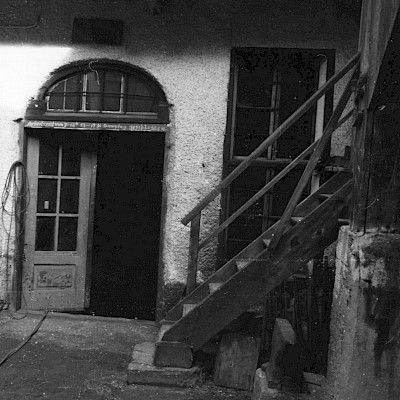The Hüttschmiede blacksmith’s
The Hüttschmiede blacksmith’s was part of the smeltery from the 16th century in the mining village of Hütten in Leogang.
Its orders came from the flourishing mining business in the Schwarzleo Valley, local agriculture and forestry as well as the iron trading route “kleine Eisenstraße” between the Pinzgau district and the neighbouring province of Tyrol. Smiths working at the Hüttschmiede had to be capable of the farrier’s, tool smith’s and blacksmith’s crafts.
For centuries the blacksmith’s was water-powered by the Leogang Ache (see picture 1) and several water wheels. It was not until the last century that they were replaced by a single water wheel with power transmission (see picture 2) and finally by electricity in the 1950s.
At the Hüttschmiede, which has survived since the Late Gothic Period with the typical Gothic bow, iron was heated until soft (see picture 3) and then formed by hand on the anvil or through mechanical power with the heavy spring hammer (see picture 4). The smiths’ arsenal of tools was rounded off by a drill and whetstone (see picture 5).
The blacksmith’s was in operation in its modern-day form until 1972 and still used occasionally after that time for minor repairs.
Since 2012, honorary blacksmiths demonstrate the art of metalwork to the visitors of the Hüttschmiede. From May to October, it is open every Wednesday from 10 a.m. to 5 p.m. and for special events.
